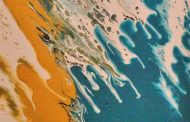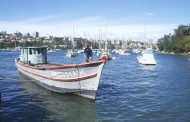| Angiogenesis, the growth of new capillary blood vessels in the body, is an important natural process in the body used for healing and reproduction. The body controls angiogenesis by producing a precise balance of growth and inhibitory factors in healthy tissues.
When this balance is disturbed, the result is either too much or too little angiogenesis. Abnormal blood vessel growth, either excessive or insufficient, is now recognized as a “common denominator” underlying many deadly and debilitating conditions, including cancer, skin diseases, age-related blindness, diabetic ulcers, cardiovascular disease, stroke, and many others. The list of diseases that have angiogenesis as an underlying mechanism grows longer every year.
|
| Angiogenesis-based Medicine — restoring the body’s natural control of angiogenesis — is a new, comprehensive approach to fighting disease. By using new medical treatments that either inhibit or stimulate angiogenesis, doctors are prolonging the lives of cancer patients, preventing limb amputations, reversing vision loss, and improving general health.
All cancerous tumors, for example, release angiogenic growth factor proteins that stimulate blood vessels to grow into the tumor, providing it with oxygen and nutrients. Antiangiogenic therapies literally starve the tumor of its blood supply by interfering with this process. A new class of cancer treatments that block angiogenesis are now approved and available to treat cancers of the colon, kidney, lung, breast, liver, brain, and thyroid, as well as multiple myeloma, bone gastrointestinal stromal tumors, soft tissue sarcoma, and SEGA tumors. Some older drugs have been rediscovered to block angiogenesis, as well. These are being used to treatment angiogenesis-dependent conditions, such as hemangiomas, colon polyps, and precancerous skin lesions.
Therapeutic angiogenesis, in contrast, stimulates angiogenesis where it is required but lacking. This technique is used to replenish the blood supply to chronic wounds to speed healing, and it prevents unnecessary amputations. New research suggests this approach can be also used to save limbs afflicted with poor circulation, and even oxygen-starved hearts. Therapeutic angiogenesis may even help to regenerate damaged or lost tissues in ways that were previously considered impossible, such as with nerves and brain tissue.
| THE BODY’S CONTOL OF ANGIOGENESIS |
Angiogenesis (angio’gen’esis) — the growth of new blood vessels — is an important natural process occurring in the body, both in health and in disease. Angiogenesis occurs in the healthy body for healing wounds and for restoring blood flow to tissues after injury or insult. In females, angiogenesis also occurs during the monthly reproductive cycle (to rebuild the uterus lining, to mature the egg during ovulation) and during pregnancy (to build the placenta, the circulation between mother and fetus).The healthy body controls angiogenesis through a series of “on” and “off” switches:
- The main “on” switches are known as angiogenesis-stimulating growth factors
- The main “off switches” are known as angiogenesis inhibitors
When angiogenic growth factors are produced in excess of angiogenesis inhibitors, the balance is tipped in favor of blood vessel growth. When inhibitors are present in excess of stimulators, angiogenesis is stopped. The normal, healthy body maintains a perfect balance of angiogenesis modulators. In general, angiogenesis is “turned off” by the production of more inhibitors than stimulators.
| Angiogenesis in Disease |
Angiogenesis in Disease: The Big Picture
In many serious diseases states the body loses control over angiogenesis. Angiogenesis-dependent diseases result when new blood vessels either grow excessively or insufficiently.
Excessive angiogenesis:
- Occurs in diseases such as cancer, diabetic blindness, age-related macular degeneration, rheumatoid arthritis, psoriasis, and more than 70 other conditions.
- In these conditions, new blood vessels feed diseased tissues, destroy normal tissues, and in the case of cancer, the new vessels allow tumor cells to escape into the circulation and lodge in other organs (tumor metastases).
- Excessive angiogenesis occurs when diseased cells produce abnormal amounts of angiogenic growth factors, overwhelming the effects of natural angiogenesis inhibitors.
- Antiangiogenic therapies, aimed at halting new blood vessel growth, are used to treat these conditions.
Insufficient angiogenesis:
- Occurs in diseases such as coronary artery disease, stroke, and chronic wounds.
- In these conditions, blood vessel growth is inadequate, and circulation is not properly restored, leading to the risk of tissue death.
- Insufficient angiogenesis occurs when tissues cannot produce adequate amounts of angiogenic growth factors.
- Therapeutic angiogenesis, aimed at stimulating new blood vessel growth with growth factors, is being developed to treat these conditions.
Angiogenesis is a disease common denominator
Angiogenesis, the growth of new blood vessels, is a “common denominator” shared by diseases affecting more than one billion people worldwide. This includes all cancers, cardiovascular disease, blindness, arthritis, complications of AIDS, diabetes, Alzheimer’s disease, and more than 70 other major health conditions affecting children and adults in developed and developing nations. Our vision is that angiogenesis-based therapies are a unifying approach to disease and will have the same impact in the 21st century that antibiotics had in the 20th century.
| The Angiogenesis Process |
 The Angiogenesis Process: How Do New Blood Vessels Grow?The process of angiogenesis occurs as an orderly series of events: The Angiogenesis Process: How Do New Blood Vessels Grow?The process of angiogenesis occurs as an orderly series of events:
- Diseased or injured tissues produce and release angiogenic growth factors (proteins) that diffuse into the nearby tissues.
- The angiogenic growth factors bind to specific receptors located on the endothelial cells (EC) of nearby preexisting blood vessels.
- Once growth factors bind to their receptors, the endothelial cells become activated. Signals are sent from the cell’s surface to the nucleus.
- The endothelial cell’s machinery begins to produce new molecules including enzymes. These enzymes dissolve tiny holes in the sheath-like covering (basement membrane) surrounding all existing blood vessels.
- The endothelial cells begin to divide (proliferate) and migrate out through the dissolved holes of the existing vessel towards the diseased tissue (tumor).
- Specialized molecules called adhesion molecules called integrins (avb3, avb5) serve as grappling hooks to help pull the sprouting new blood vessel sprout forward.
- Additional enzymes (matrix metalloproteinases, or MMP) are produced to dissolve the tissue in front of the sprouting vessel tip in order to accommodate it. As the vessel extends, the tissue is remolded around the vessel.
- Sprouting endothelial cells roll up to form a blood vessel tube.
- Individual blood vessel tubes connect to form blood vessel loops that can circulate blood.
- Finally, newly formed blood vessel tubes are stabilized by specialized muscle cells (smooth muscle cells, pericytes) that provide structural support. Blood flow then begins.
| Angiogenesis Facts & Figures |
- Blood vessels are comprised of cells called endothelial cells. The total surface area covered by these cells in an adult is 1000 m2 — roughly the size of a tennis court.
- If all the blood vessels in the body were lined up end-to-end, they would form a line that could circle the earth twice.
- Blood vessel cells do not normally grow in the healthy adult they are normally inactive, or quiescent.
- There are at least 20 different known angiogenic growth factors.
- Five angiogenic growth factors are being tested in humans for growing new blood vessels to heal wounds and to restore blood flow to the heart, limbs, and brain.
- Angiogenic gene therapy is also being developed as a method to deliver angiogenic growth factors to the heart, limbs, and wounds.
- There are at least 30 known natural angiogenesis inhibitors found in the body.
- The first angiogenesis inhibitor molecule was discovered in 1975 by Dr. Judah Folkman and Dr. Henry Brem in a study of cartilage.
- Angiogenesis inhibitors have been discovered from natural sources, including tree bark, fungi, shark muscle and cartilage, sea coral, green tea, and herbs (licorice, ginseng, cumin, garlic).
- In total, more than 300 angiogenesis inhibitors have been discovered to date.
- At least 184 million patients in Western nations could benefit from some form of antiangiogenic therapy.
- At least 314 million patients in Western nations would benefit from some form of angiogenesis-stimulating (pro-angiogenic) therapy.
- The first successful treatment of an angiogenesis-dependent disease occurred in 1989, when the drug interferon alfa2a, an angiogenesis inhibitor, was used to regress the abnormal blood vessels growing in the lungs of a boy with a benign disease called pulmonary hemangiomatosis.
- Some cancer patients have experienced dramatic regression of their tumors from antiangiogenic therapy; others have experienced stabilization of their disease.
- More than 2,000 patients with heart disease have received some form of experimental angiogenic therapy.
- The first FDA-approved device to stimulate new blood vessels to grow in diseased hearts is a laser used in a technique called Direct Myocardial Revascularization, or DMR (sometimes called transmyocardial revascularization, TMR).
- The first FDA-approved blood vessel therapy for eye disease is a type of photodynamic therapy called Visudyne (QLT Therapeutics/CibaVision), which has shown effectiveness for treating macular degeneration.
- The first angiogenesis-stimulating medicine is a prescription gel called Regranex (recombinant human platelet-derived growth factor-BB, Ortho-McNeil Pharmaceuticals) that became FDA-approved to heal diabetic foot ulcers in December 1997.
- More than $4 billion has been invested in the research and development angiogenesis-based medicines, making this one of the most heavily funded areas of medical research in human history.
|
Authors of this section: William Li, M.D., Michelle Hutnik, D.Sc., Roderick Smith M.S., and Vincent Li, M.D. |
|
|
 
www.vietthuc.org

|














































